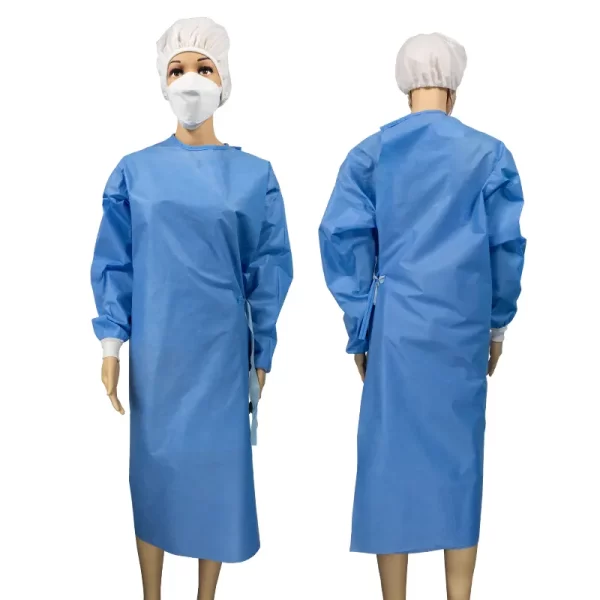The Role of Surgical Gowns in Infection Control: A Comprehensive Review
Introduction
The world of medicine has always been a constant battlefield against pathogens, and at the forefront of this continual battle is the surgical gown. An unassuming yet vital component of Personal Protective Equipment (PPE), surgical gowns play an essential role in maintaining a sterile environment and preventing the transmission of infections. As an expert in the surgical gown industry, this article provides a comprehensive review of the significant part that these gowns play in infection control within healthcare settings.
Part 1: Unpacking Infection Control
Infection control in healthcare settings involves a multidimensional approach, aiming to prevent the transmission of pathogens and protect both healthcare workers and patients from infections. This complex system comprises numerous components, including meticulous hand hygiene, sterilization of surgical instruments, and proper utilization of PPE, among which surgical gowns play a crucial role.
Surgical gowns serve as a barrier between healthcare professionals and potential sources of contamination, such as body fluids and microbial flora. They help prevent the transfer of microorganisms and body fluids in surgical procedures, acting as a shield that protects both the wearer and the patient from potential cross-contamination.
Part 2: The Historical Trajectory of Surgical Gowns in Infection Control
The significance of surgical gowns in infection control emerged in tandem with our understanding of the role of microbes in causing diseases. In the late 19th century, as germ theory began to gain acceptance, the surgical community recognized the need for measures to prevent the spread of these microorganisms during surgical procedures.
During this period, simple cloth gowns were introduced. Although these garments were rudimentary compared to modern standards, they were a step towards acknowledging the role of gowns as a protective barrier between the surgeon and the patient.
As our understanding of infection transmission advanced in the 20th century, so did the sophistication of surgical gowns. Sterilized cotton gowns became commonplace, ushering in an era where gowns were not just barriers but tools to maintain sterility in operating rooms. These gowns underwent sterilization using autoclaves before every surgical procedure, significantly reducing the potential for cross-contamination and subsequent infections.
However, the real revolution in surgical gown technology came in the mid-20th century with the advent of disposable surgical gowns. Born from the culture of disposability that emerged post-World War II, these gowns offered a new and more effective approach to infection control.
Made from synthetic materials such as polypropylene, disposable gowns were designed for single-use, thereby eliminating the risk of cross-contamination between surgeries. Additionally, these gowns were cost-effective and time-saving as they eliminated the need for repeated sterilization. Thus, the advent of disposable surgical gowns marked a major milestone in infection control.
Part 3: The Modern Day Marvel: Advanced Material Technology in Surgical Gowns
In the late 20th and early 21st centuries, the surgical gown industry witnessed significant advancements in material technology. Materials such as spunlace nonwoven, SMMS (spunbond-meltblown-meltblown-spunbond), and polyethylene films started being used to manufacture surgical gowns. These materials offered high fluid resistance, excellent breathability, and enhanced comfort, thereby increasing the protective efficacy of the gowns.
Furthermore, the development of these materials led to the creation of surgical gowns that provided an outstanding level of protection against fluid and microbial penetration. Consequently, the use of these advanced materials in surgical gowns significantly reduced the risk of surgical site infections, thus bolstering infection control measures.
Another crucial development in this era was the advent of reinforced and specialist gowns. These gowns offered varying levels of protection based on the nature and risk associated with the surgical procedure. This concept, termed ‘personalized protection’, meant that high-risk procedures could be performed with more confidence and reduced fear of pathogen transmission.
Part 4: The Intricate Dance of Design and Infection Control
While material advancements played a significant role in enhancing the role of surgical gowns in infection control, design innovations also contributed substantially. Modern surgical gowns underwent design overhauls to provide full frontal coverage, long sleeves, and adjustable necklines.
This era of design-centric surgical gowns placed emphasis on ergonomics to ensure that the wearer’s comfort and flexibility were not compromised while maintaining the highest standards of safety. This balance of function and form increased the likelihood of correct gown use, consequently improving the effectiveness of infection control measures.
The introduction of surgical gowns with antimicrobial coatings offered an additional layer of protection against potential pathogens. These gowns, when coupled with standard infection control practices, provided an enhanced level of protection against surgical site infections.
Part 5: A Glimpse into the Future: Surgical Gowns and Infection Control
The future of surgical gowns holds fascinating potential. With the development of smart textiles, we may soon witness the introduction of surgical gowns capable of monitoring vital signs, detecting contamination, and releasing antimicrobial agents. These ‘smart’ gowns could provide real-time feedback about the surgical environment, thus adding a new dimension to infection control.
Sustainability is another critical aspect of future developments in surgical gowns. The surgical gown industry is shifting towards the development of eco-friendly, biodegradable surgical gowns. These sustainable gowns aim to strike a balance between maintaining stringent infection control standards and reducing the environmental impact of healthcare activities.
Conclusion
Surgical gowns, often underappreciated, play a pivotal role in infection control within the healthcare industry. The evolution of surgical gowns – from simple cloth gowns to high-tech smart gowns – tells a tale of continuous improvements and persistent quest for enhancing patient safety and infection control measures.
As we move forward, surgical gowns will continue to evolve, incorporating advancements in material technology and design innovation to meet the changing demands of healthcare. The future holds exciting prospects for surgical gowns, promising to further enhance their role in infection control.
Please visit our website for more product details https://medposnonwoven.com/product/surgical-gown-disposable/

